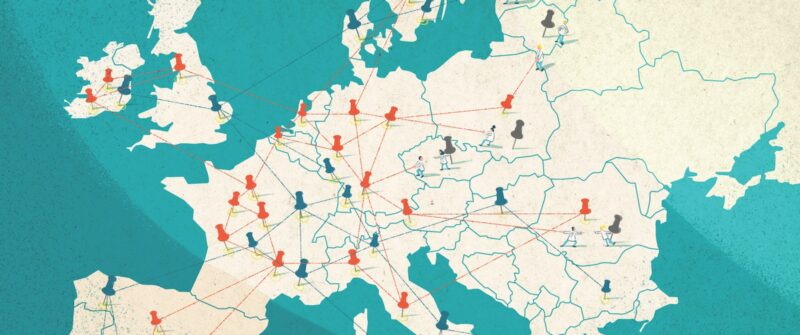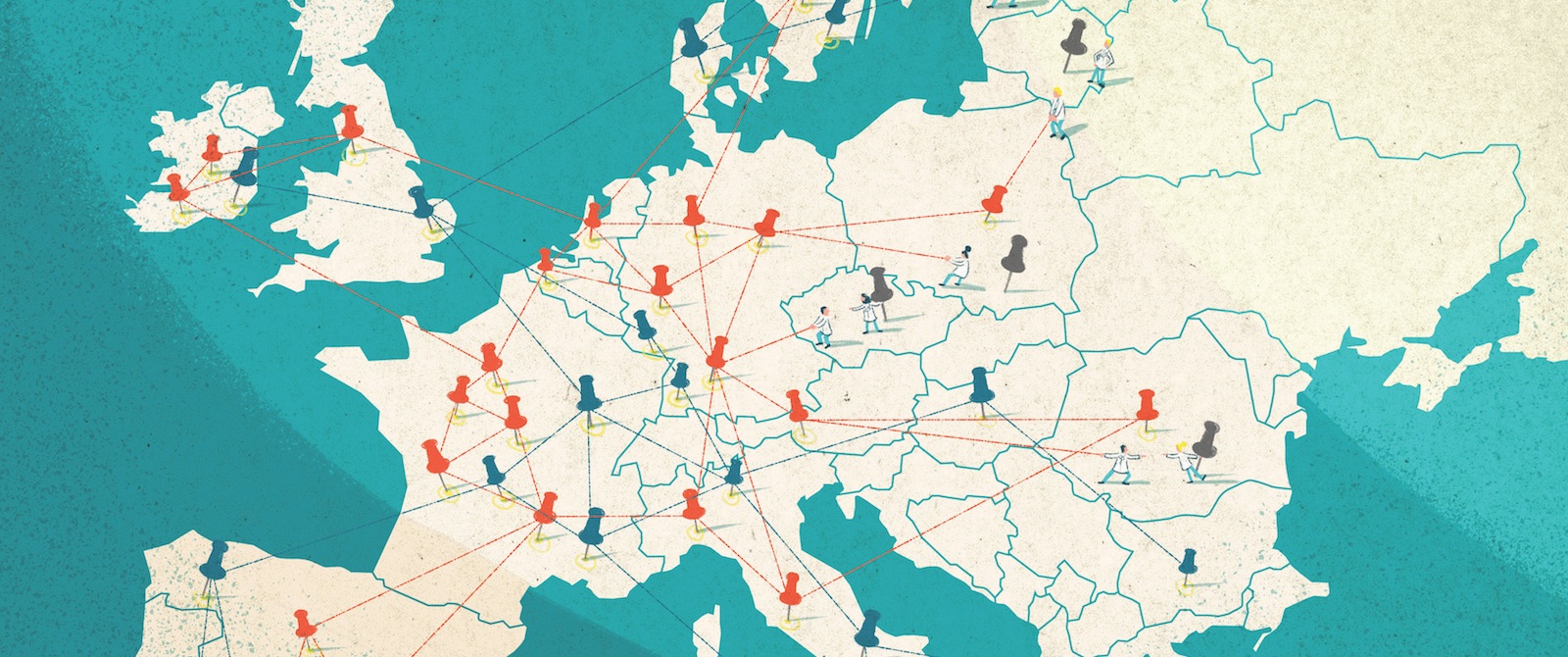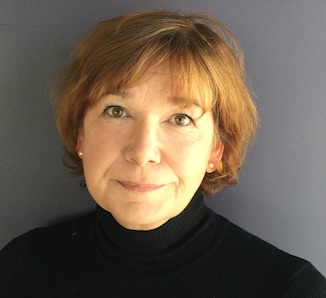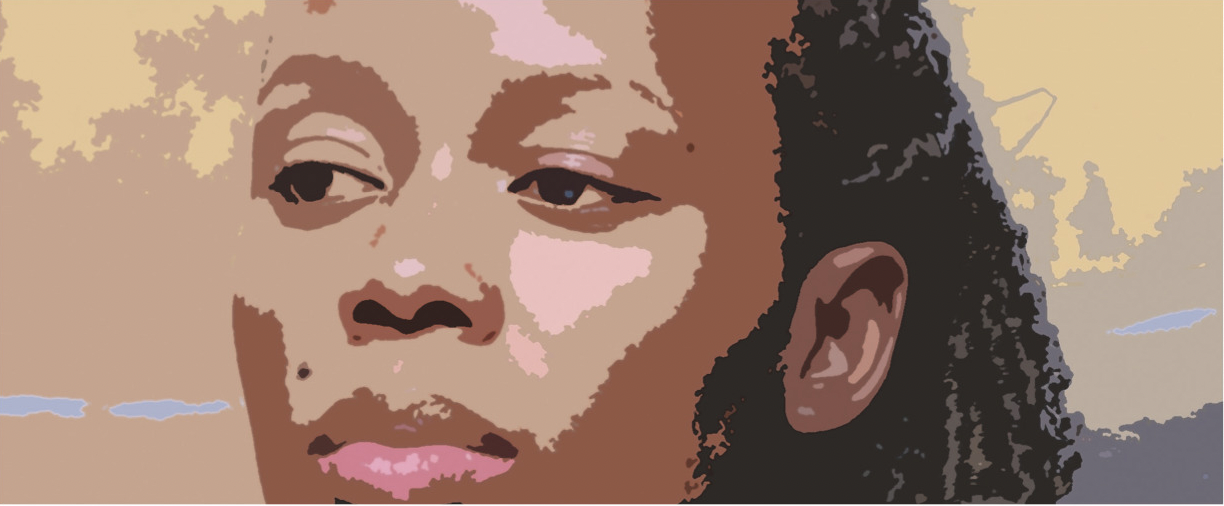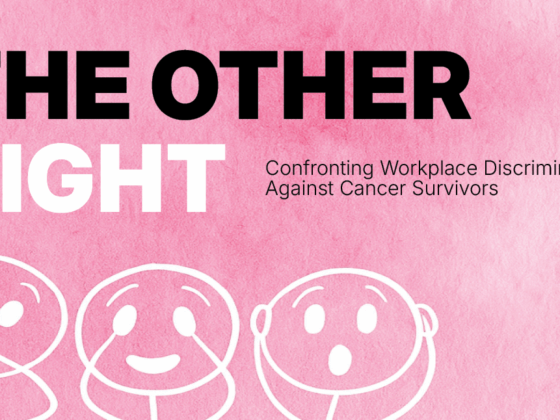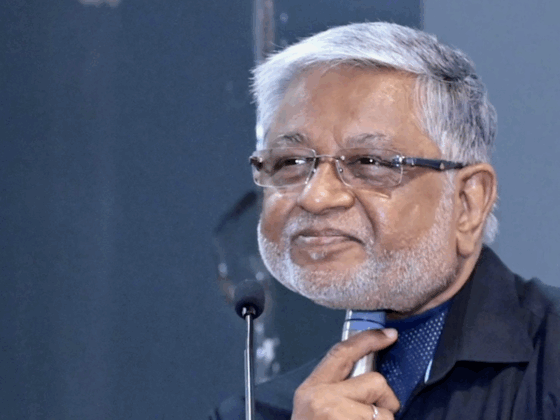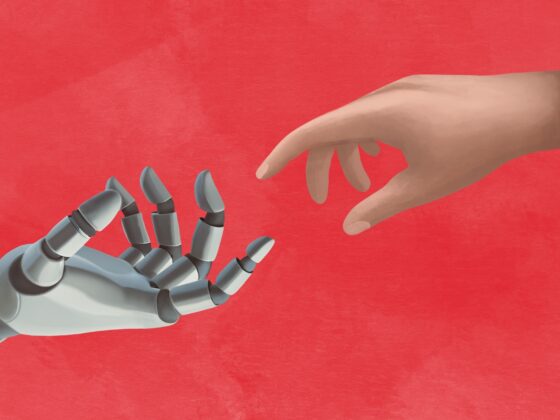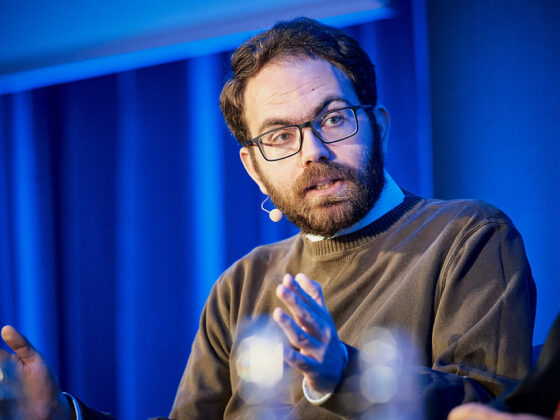What value can collaboration between EU member states add to the quality of care accessible to all EU citizens? It’s a question that has become urgent and topical with the coronavirus pandemic, and one that EU4Health, the EU’s new funding programme “for a healthier and safer Union”, presented at the end of May, seeks to address. Part of the programme involves expanding existing initiatives, key among them the EU’s flagship European Reference Networks (ERNs).
Launched in 2017 with the aim to help patients with rare complex diseases access diagnostics and care provided by specialists, the idea was to give patients and their doctors access to expertise that might be missing within their own country, in the form of ‘virtual advisory boards’ ‒ virtual panels of medical experts from different countries. Rather than the patient having to move across borders, knowledge and expertise would move. Three years on, and part way through a pandemic, how is the vision turning out in the field of cancer?
In total, 24 ERNs were launched to address the needs of around 30 million people in the EU who are thought to have rare conditions that impact on their daily lives. Four of the networks address cancer entities: GENTURIS for genetic tumour risk syndromes, PaedCan for paediatric cancer, EuroBloodNet for malignant and non-malignant haematological diseases, and EURACAN for rare adult solid tumours.
Of these, paediatric oncology was seen to have the closest fit with the ERN concept, having had decades of experience working within their own international collaborative networks. Indeed, Europe’s paediatric oncology society, SIOPE, was chosen to pilot the ERN concept in a three-year project ‒ ExPO-r-Net (2014-2017) ‒ which amongst other things looked at the technical and legal issues involved in conducting cross-border tumour boards.
Though with less of a track record of collaborative clinical trials, Europe’s haematologists have a similar history of working within a single specialism, attending the same conferences, reading the same journals.
By contrast, specialists in rare adult solid tumours ‒ which have been estimated to include around 300 different types of cancer ‒ are a much more diverse group of professionals, being spread across 10 areas of expertise, ranging from rare digestive cancers and cancers of the male or female genital tracts, to sarcomas and endocrine tumours. Achieving added value from networking among institutions with expertise in such a diverse group of cancer types was always going to be a bigger ask.
It’s working, but perhaps not as expected…
EURACAN: Developing and strengthening national networks
The EURACAN network is split into 10 ‘domains’, which correspond to the 10 areas of expertise in of rare adult solid tumours. Paolo Casali, director of one of the medical oncology units at the Istituto Nazionale dei Tumori in Milan, leads the work in the sarcoma domain, and says the structure functions well enough. “We are working together, coordinating each domain’s own projects with each other.”
EURACAN areas of expertise
EURACAN distinguishes rare adult solid cancers into 10 domains corresponding to the 10th revision of the International Statistical Classification of Diseases and Related Health Problems (ICD10), RARECARE and RARECAreNet projects.
- Sarcoma of the soft tissue, bone and viscerae (Sarcoma)
- Rare neoplasm of the female genital organs and placentas (Rare GYN)
- Rare neoplasm of the male genital organs, and of the urinary tract (Rare GU)
- Neuroendocrine tumours (NET)
- Rare neoplasm if the digestive tract (Rare GI)
- Rare neoplasm of endocrine organs (Endocrine)
- Rare neoplasm of the head and neck: Salivary gland tumours, nasopharyngeal cancer, nasal and sinonasal cancers, middle ear (Rare H&N)
- Rare neoplasm of the thorax: Thymoma, mediastinum and pleura (Rare Thoracic)
- Rare neoplasm of the skin and eye melanoma (Rare Skin/Eye melanoma)
- Rare neoplasm of the brain, spinal cords (Rare Brain)
Source: https://euracan.ern-net.eu/about/ accessed 23 July 2020
Casali argues that the reference network is proving to be of value, but not necessarily in the way that had been intended. He says that the goal of giving patients with rare cancers access to individual teleconsultation facilities, to raise the quality of their diagnosis and care, will realistically affect a fairly limited number of patients.
“Rare adult solid cancers make up 15% of all new cancer cases. We can’t even imagine sending requests for teleconsultations to centres from EURACAN from the whole of Europe, on 15% of cancer cases. On top of that, teleconsultations may be useful to the single patient, as a second opinion, but they can hardly impact quality of care on a large scale,” says Casali, though he adds that ultra-rare cancers may occasionally be an exception to this rule “In a sense, I’d say that networks at the European level may be especially beneficial for these very rare diseases. For these, the added value of a European network is undoubtedly higher, while for most rare cancers, what is vital is having national networks in place.”
Casali argues that the true potential value of EURACAN lies in developing it into a network of networks, across which consultations could be distributed. “What would change quality of care would be to have networking within countries, to amplify the expertise of centres of reference and allow them to convey their expertise to the community.” Having several levels of networks could also make teleconsultations reality. “We are trying to set up an organisation by which each request may be managed first nationally, by the EURACAN centres within the nation, and then going to the EU level only if necessary ‒ either because the country doesn’t have a national healthcare institution within EURACAN or because the case is too challenging. This is the reason why national networking would be so important: to integrate the European and the national levels with each other.” To facilitate this, a patient referral pathway has now been defined and will be accessible through the EURACAN webpage using a clinical patient management system provided as a tool to the ERNs. How individual countries organise their national networks– a network for all rare cancers, several networks covering different rare cancers, or other models – will be up to each member state to decide.
“What would change quality of care would be to have networking within countries, to amplify the expertise of centres of reference”
Aside from virtual advisory boards, work within EURACAN currently focuses on three pillars that are intended to bring added value to the delivery of high quality care for rare adult solid cancers: clinical research, clinical practice guidelines and regulatory issues.
“EURACAN is trying to give rise to virtual biobanks and observational clinical registries within the network and across borders, which would be used for observational research,” says Casali. “I think this is the automatic added value of networking in healthcare. While normally this kind of research is less likely to happen spontaneously, it would become spontaneous within a network.”
As for guidelines, domains within EURACAN work on expanding consensus around the clinical practice guidelines developed by the European Society for Medical Oncology (ESMO) to all institutions that are part of the EURACAN network. So far, three clinical practice guidelines with consensus backing from both EURACAN and ESMO have been published, covering gastrointestinal stromal tumours, soft tissue and visceral sarcomas, and bone sarcomas. Other guidelines are planned on other rare adult solid cancers beyond sarcomas.
The EURACAN network is also trying to address the methodology of clinical research and regulatory issues, focusing on the adaptive licensing of drugs, and other solutions for agents developed for very rare cancers. “The area of new drugs and innovative treatment is important, because it is in the middle between research and care,” says Casali. “I think ERNs can be very useful here, because the centres were selected by their own governments, so we think that they may trust these centres and allow them to test something new, including innovative research, even on the off-label use of drugs.”
EuroBloodNet: Improving knowledge
EuroBloodNet, the network covering rare malignant and non-malignant haematological diseases, does have telemedicine as a key focus ‒ though it is only one among five areas of action, which also include: cross-border healthcare, best practice, continuing medical education, and clinical trials and research.
Currently, EuroBloodNet is piloting teleconsultations for sickle cell disease, and Matteo Della Porta, Associate Professor of Haematology at Humanitas University in Milan, who coordinates EuroBloodNet’s clinical trials and research work, says that exploring the potential for using telemedicine “to provide access to a second opinion from a diagnostic point of view, as well as regarding a treatment decision plan,” is a priority for the network. “This has been implemented for some very rare genomic haematological conditions in which we have a real unmet clinical need. If this initiative is successful, the idea is to re-enforce these activities and provide structures for a second opinion, including for oncological rare diseases.”
For Della Porta, however, the main value of EuroBloodNet lies in its potential to improve knowledge about the biological mechanisms of disease, and the biological features that are relevant for patient prognosis and for clinical benefit.
For Della Porta, the main value of EuroBloodNet lies in its potential to improve knowledge
Like EURACAN, EuroBloodNet is also looking to connect and facilitate registries through its ENROL project (the European Rare Blood Disorders Platform). Partners in the network plan to collect clinical and genomic data for rare haematological diseases according to standardised criteria. “From a clinical point of view, this is an important instrument,” he explains. “With comprehensive biological and clinical data, we can define specific risk profiles for individual patients and also drive the development of new drugs for these rare conditions.”
But EuroBloodNet is going further, in actually promoting clinical trials rather than just observational studies. To do this it has set up the EuroBloodNet Foundation, which is legally independent from the clinical network. “The foundation can reach money to specifically sponsor clinical trials in rare haematological conditions,” he explains. “This reduces the cost to pharmaceutical companies of running such trials, and can be a relevant initiative to improve the number of clinical trials for our patients.”
Several collaborative initiatives are now underway, starting with a survey of how many patients are treated in each EuroBloodNet centre for the different rare haematological disorders, and a survey of clinical trials active at each centre ‒ information that is shared with patients. The hope is to make it easier for patients to access these trials, says Della Porta. “By including at least one reference centre in each European country in a trial, we would improve the ability to access clinical trials for all patients. This would significantly improve access to innovative treatment for patients with very rare haematological conditions.”
“By including at least one reference centre in each European country in a trial, we would improve the ability to access clinical trials for all patients”
Della Porta is also looking to apply new tools to analyse and generate clinical evidence from the data stored in the nascent EuroBloodNet repository. “We will have the opportunity to apply algorithms of artificial intelligence, that can improve diagnosis and individual risk prognosis, directly on our data from patients.”
“Good for networking”
Patient advocates working with the respective ERNs highlight opportunities to network as a major added value. Every reference network has its own ‘European Patient Advocacy Group’ (ePAG) ‒ a concept that was initiated by EURORDIS (Rare Diseases Europe), and designed to ensure the patient advocacy perspective is present at all levels and in all areas of activity. Kathy Oliver, chair and founding co-director of the International Brain Tumour Alliance (IBTA), is a member of the EURACAN ePAG. She points to the impact the reference network has had in bringing together highly experienced specialists and cancer patient advocates. “EURACAN has been invaluable in helping to build stronger networks of expertise where these were already in place, and has also greatly encouraged the establishment of new networks where they hadn’t existed before.”
By uniting the ten different ‘domains’ of rare adult solid cancers into one ERN, EURACAN is also fostering collaboration between advocates active in different types of adult rare cancers, Oliver adds. “It’s valuable to understand what other patient advocates are going through in their own site-specific cancers, because sometimes, we have very similar challenges. We can use these commonalities to advance improvements in all kinds of areas, such as research, treatment, policy, approvals, and health technology appraisal.”
The sentiment is echoed by fellow ePAG member Emma Kinloch, who founded Salivary Gland Cancer UK. “Anything that brings together a group of patients who are hard to find, and a group of interested clinicians who might be hard to find as well, is a good thing. Working with EURACAN, you’re talking to people who really have a vested interest in care and want to help move care forward.”
Working with EURACAN, you’re talking to people who really have a vested interest in care and want to help move care forward
New opportunities for networking seem to have made less of a difference within EuroBloodNet, probably because haematological cancers were already quite well networked. Jan Geissler, co-founder of the CML Advocates Network and a member of the EuroBloodNet ePAG does credit EuroBloodNet for helping bridge the divide between malignant and non-malignant blood disorders communities, but says he feels the lack of networking across ERNs is a missed opportunity.
Widening access to specialist expertise ‒ are ERNs delivering?
According to patient materials published by the European Commission, “the ERNs can bring the expertise that is often missing within your region or your country”. But do they? In practice, although many countries are represented in each ERN, several are missing. Only five of the 66 centres that are currently part of the EURACAN network are located in central or eastern European countries ‒ two in Czechia and one each in Hungary, Poland and Slovenia. For countries that do not have a centre of reference in a particular ERN, it is unclear how expertise from the ERN could be accessed – potentially adding to existing inequalities in quality of care.
Oliver says, “The ‘East/West cancer divide’ is frequently mentioned as a source of inequalities in cancer care in Europe. It’s in this context that the ERNs like EURACAN can have a lot of positive impact by equalising diagnosis and treatment opportunities across Europe, and addressing unmet needs, regardless of geography. And we’re delighted that a number of countries in eastern Europe are now either fully validated Affiliated Partners of EURACAN or in the process of becoming full members. I hope more will join over time.”
In this regard, some hope is put on the 2019 call for new members to join the existing ERNs ‒ though the selection process has been delayed because of the coronavirus pandemic and results are expected later in the year. Standards for joining an ERN are rigorous and, as Oliver points out, “To ensure high quality of ERN care, there is a long list of criteria that centres need to fulfil before they are able to join the reference network as expert centres.”
Geissler from the EuroBloodNet ePAG, points to the lack of funding behind the whole ERN project is a major barrier. “It’s not a big problem for French and German centres to connect. They have networks, they have resources, they have healthcare systems with billions to spend. My concern is about infrastructure in eastern Europe, where the value of ERNs lies. You can’t introduce quality standards, you can’t invest in knowledge transfer, without funding.”
You can’t introduce quality standards, you can’t invest in knowledge transfer, without funding”
He believes the networks would have greater impact if they limited the scope of their ambitions. “ERNs suffer from huge ambitions and weak budgets. The resourcing of ERNs is not in proportion to their ambitions… It’s just not enough to even scratch the surface. Having five transversal fields of action [in EuroBloodNet], and all the rare haematological diseases as verticals, it’s impossible to cover such a matrix with the available resources.”
We need to be realistic about what ERNs can actually deliver, argues Geissler. “Where’s the incentive to build a teleconsultation platform or an accreditation service if you don’t know whether you will be able to sustain it one year later?” he asks.
Oliver points out that EURACAN and the other ERNs are very complex projects involving many people from different countries and cultures, and it is early days yet. “Because ERNs are still young and growing, the networks may not yet have reached their full potential. But there really is huge promise in EURACAN and all the European Reference Networks to deliver world-class cancer care. And it’s doubly exciting to know that patient engagement through the ePAGs has and will continue to play a large part in the ERNs’ success.”
“ERNs are a fantastic idea, we need something like this in Europe,” agrees Geissler, and with the current reforms and the new budget as EU4Health kicks in, he says, “there is a chance to make something really impactful out of them.”

